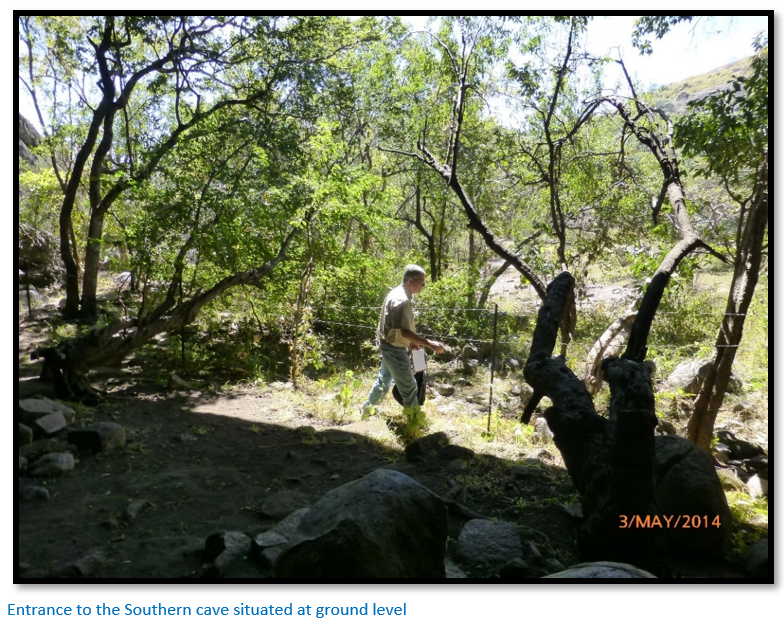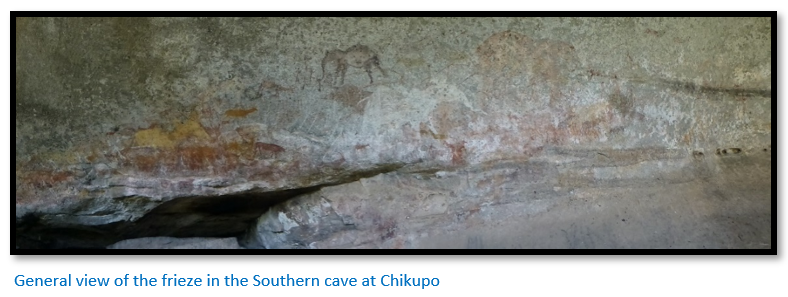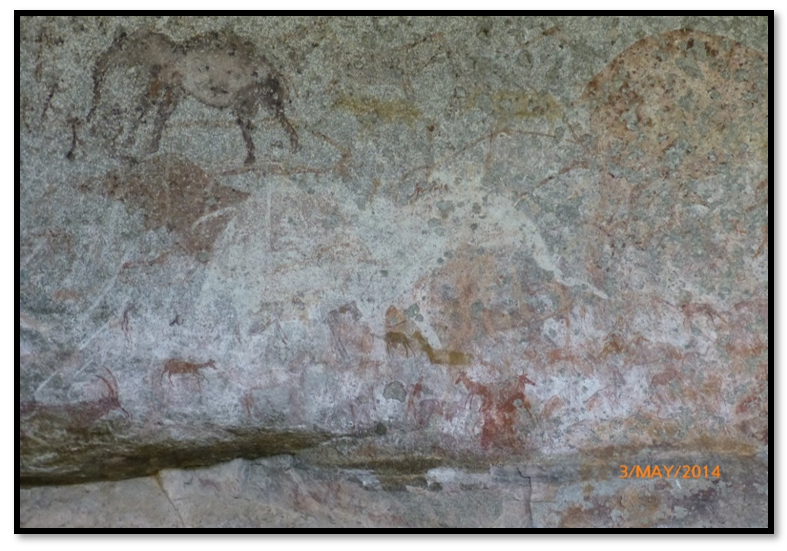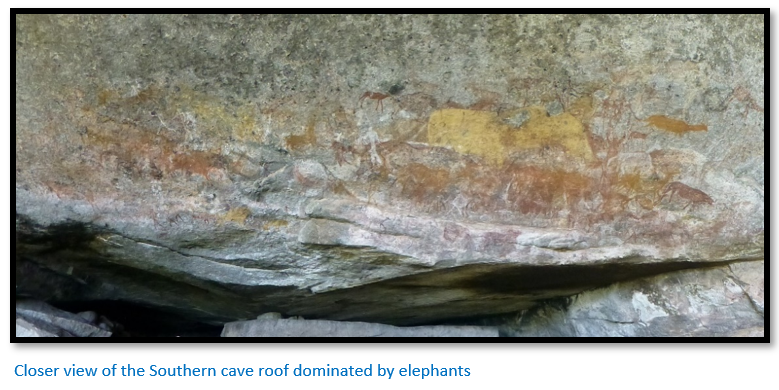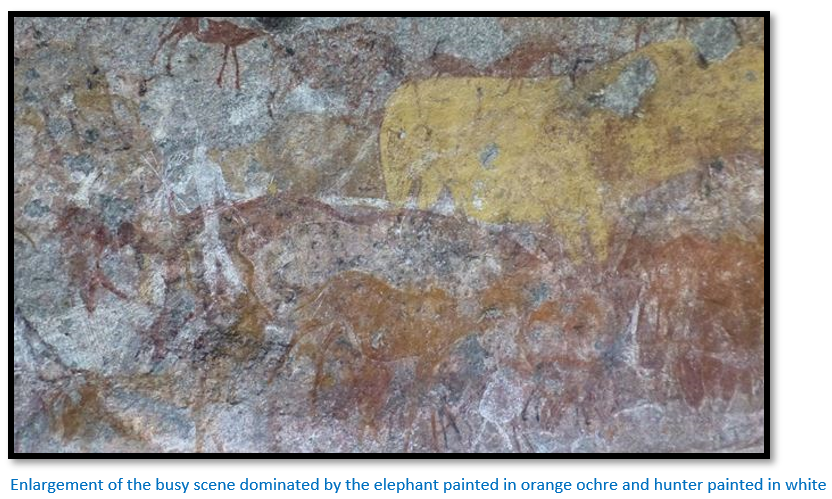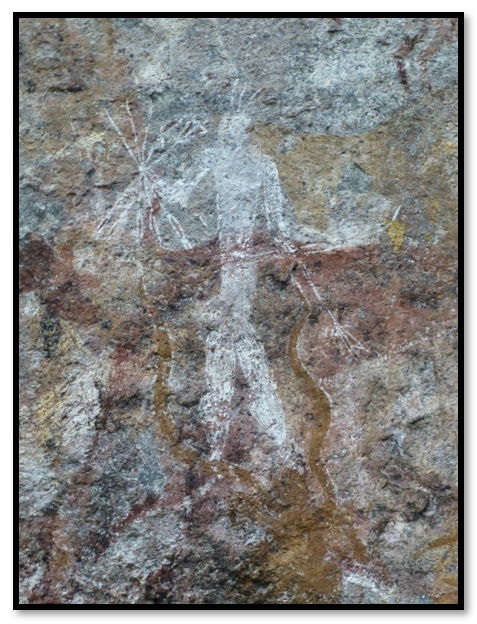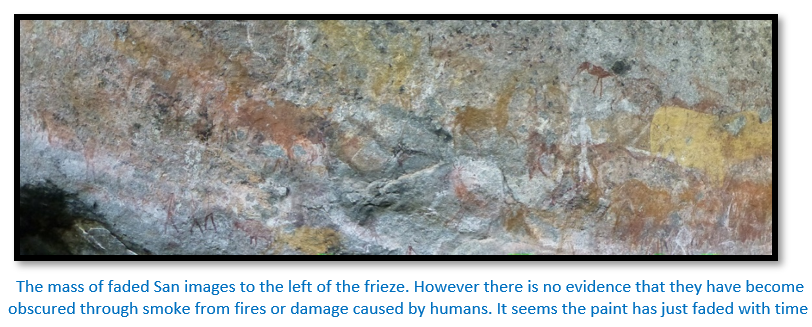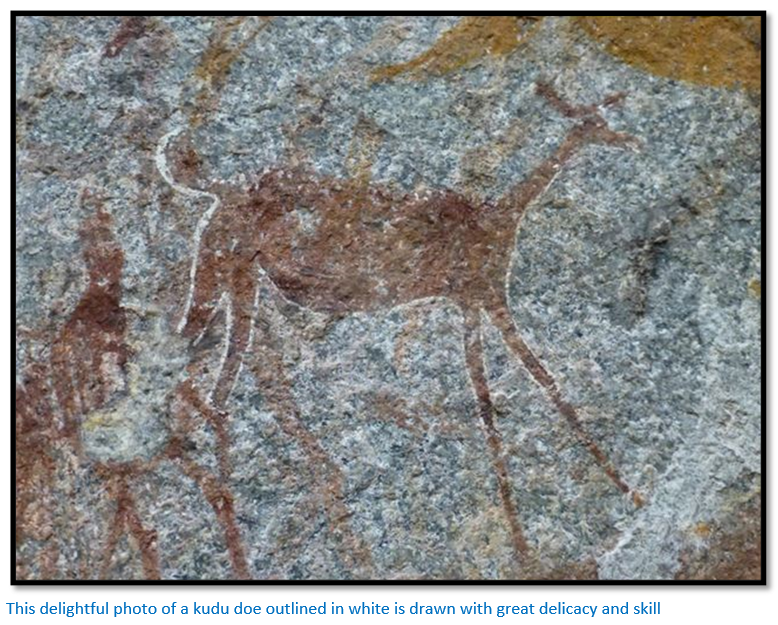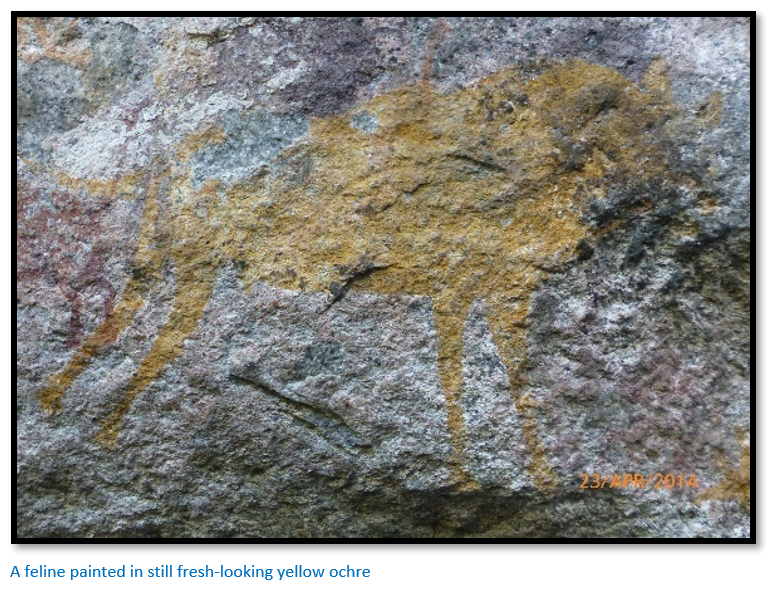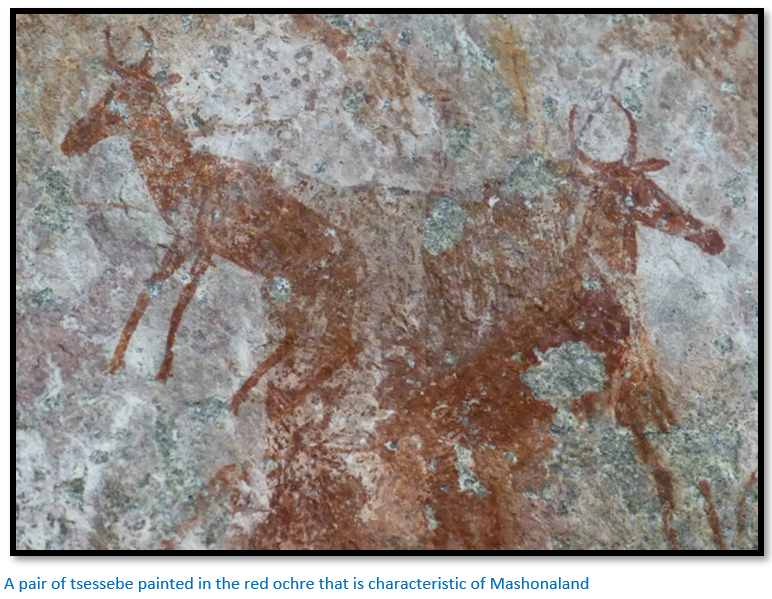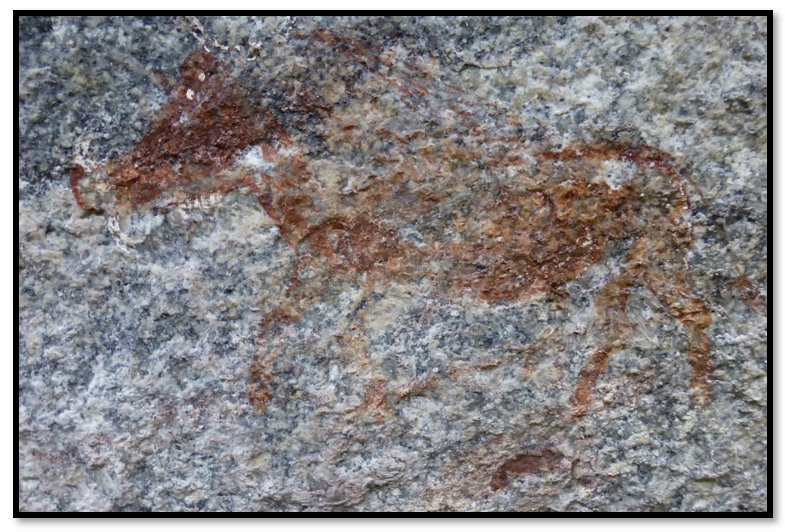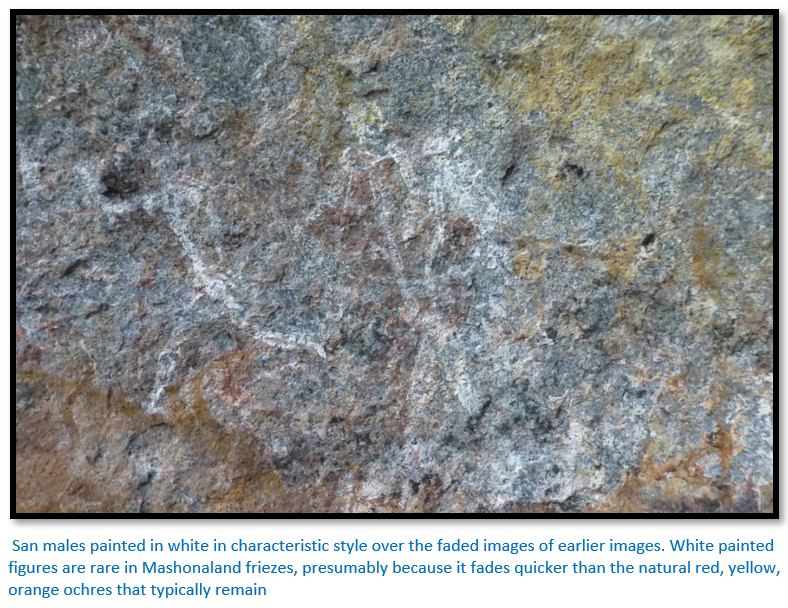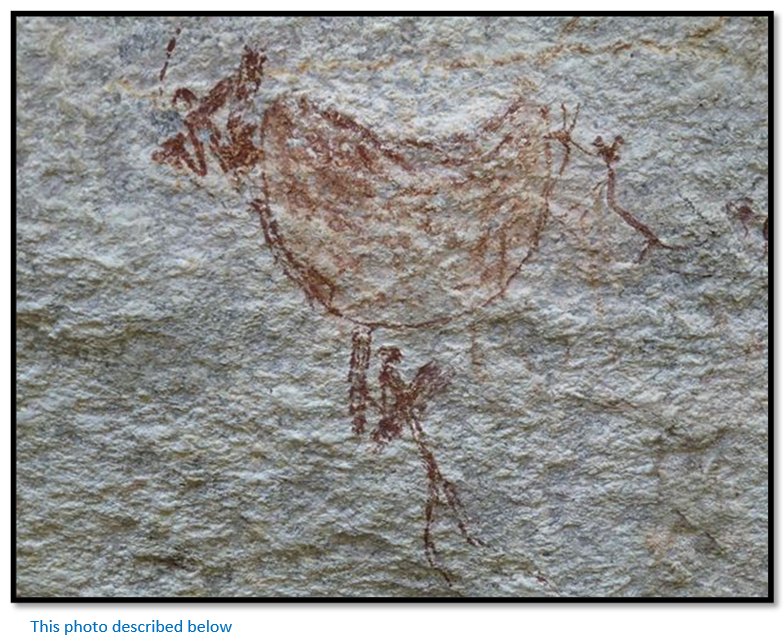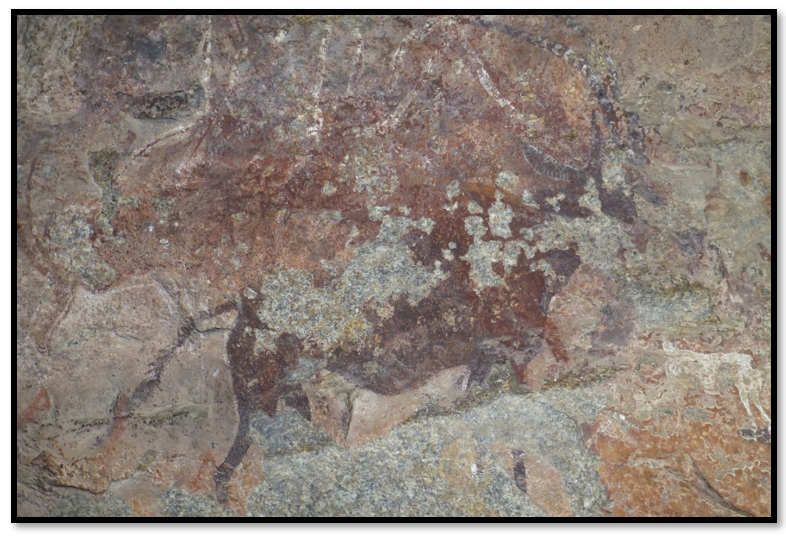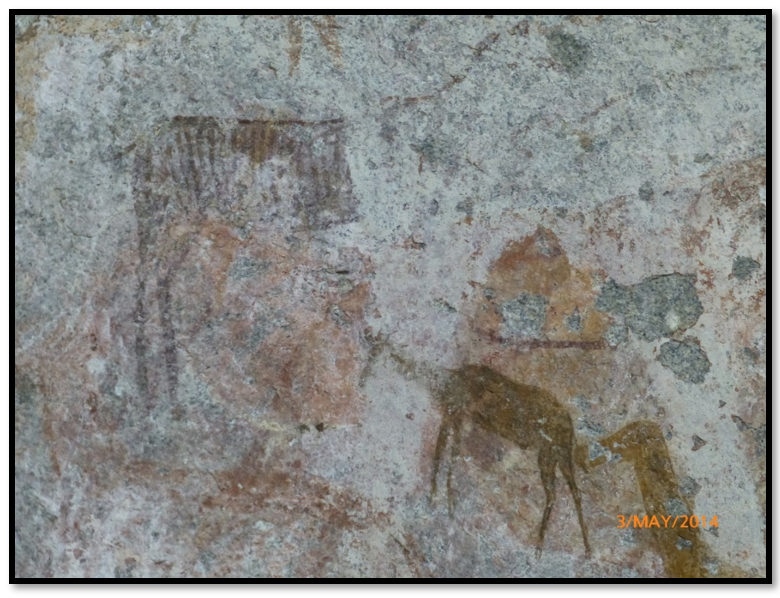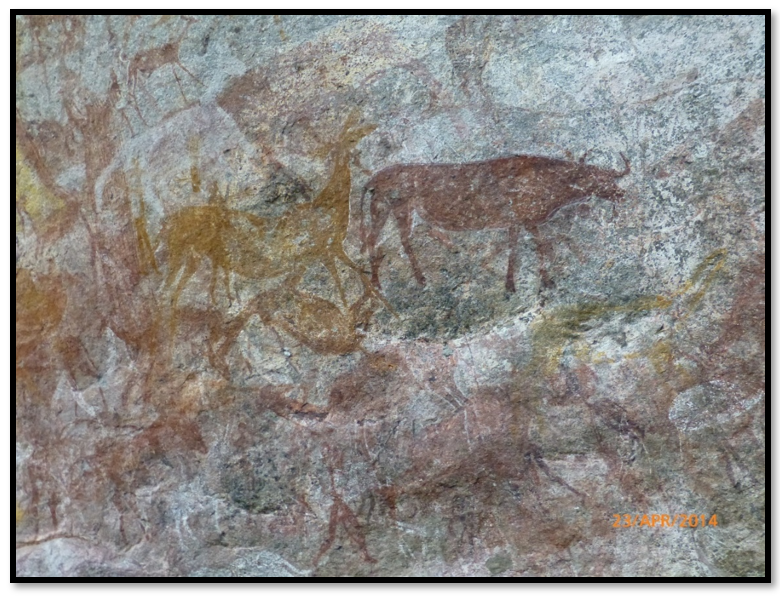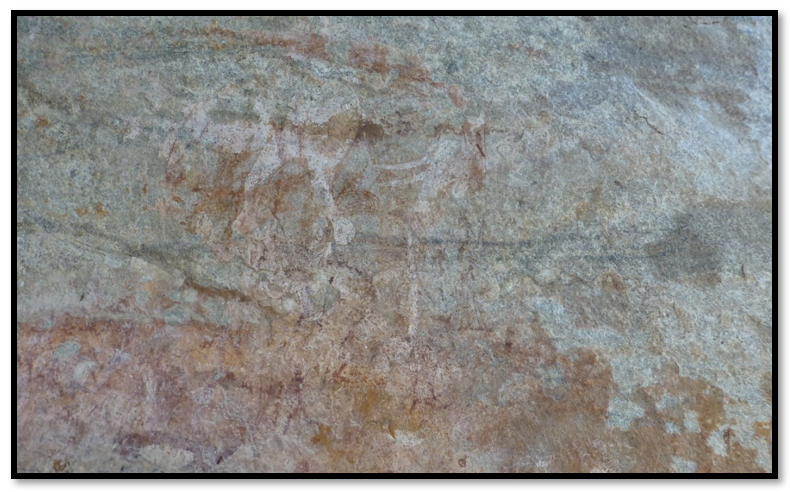Chikupo Rock Art Shelter – the Southern Cave
Peter Garlake states the Chikupo caves contain probably the greatest number of paintings remaining on any site in Zimbabwe, many in excellent condition.
Fairly easy to access from Harare, perhaps 90 minutes journey on good to fair road. 4WD not required, although high clearance is advised for driving in the Communal lands.
The descriptions of the sites follows Peter Garlake in his outstanding book: The Painted Caves; an Introduction to the Prehistoric Art of Zimbabwe, the best of the available guides and the only one before or since that is original in its thoughts and ideas.
Jørn Støvring in his book called New Approach to Cave Art in Zimbabwe; Glimpse into the Mentality History of the Ancient San in the period from 10 000 BC to 600 AD is to be congratulated for his attempt to create a new understanding of the rock art concentrating on Mashonaland and is to be commended for assisting in creating a database of over 3,000 high quality photographs.
It appears that the collaboration with National Museums and Monuments of Zimbabwe (NMMZ) was a productive one. Rockart research on this subject in Zimbabwe does not appear to have received much attention – no doubt due to the low priority given to this period, Zimbabwe’s continuing economic malaise and lack of funding and the political priorities of the various Directors of the NMMZ. Hopefully, all these shortcomings will be addressed in the future through further collaborations such as this one.
Leave Harare on the Borrowdale Road, distances are from Borrowdale police station. 13.4 KM the road crosses a grid and enters the Chinamora Communal Lands. 16.3KM pass the signpost to Domboshava National Monument. 26.6 KM pass the signpost to Ngomakurira National monument. 30.0 KM leave the tar road and turn left onto the dirt road. 34.8 KM pass Chinamora School primary / secondary school, 39.4 KM pass Jingo School, 43.1 KM turn right at T-junction. 51.0 KM turn right at Chisiga store for Masembura School: 52.3 KM pass Masembura School turnoff. Do not take the right fork. Pass the large granite dome on your right. Chikupo is the large low hill ahead on the right; 56.5 KM turn right onto the track and park at the foot of the hill. I suggest you ask a local person to guide you the last few hundred metres. The Borrowdale road to the Chinamora Communal Lands is a good tar road. The next 17 KM of tar road is much repaired with numerous potholes. The dirt road to site is quite passable in 2WD as long as caution is taken where the road gets eroded in the rains. Journey takes about one and a half hours.
The Chikupo caves are facing you on the east side of the hill and are reached by taking the path and then turning right up a short, scree slope. There are three caves within close proximity. The Southern and Central caves are easily reached, but the Northern cave has a slippery exterior rock face and is most easily climbed at the western end. The Western cave is out of sight of the three caves and is best reached by scrambling over the neck of the bare granite hill. Once passed, the cave is visible above you. Alternatively walk west around the base of the hill and climb. The paintings are in the higher of the two caves. If you run out of time, I suggest you omit the Western cave.
The three adjoining caves at Chikupo Mountain:
Southern and Central cave GPS reference: 17⁰26′42.55″S 31⁰17′21.18″E
Northern cave GPS reference: 17⁰26′40.48″S 31⁰17′25.78″E
and another across the valley:
Western Cave GPS reference: 17⁰26′41.83″S 31⁰17′17.30″E
The Southern cave is very easy to enter at ground level under a fence that has been erected to keep out stray cattle. There is a mass of paint remains on the western side; the original paintings were probably ruined by cattle being penned in the cave and rubbing up against them at some time in the past.
The largest painted objects are four large elephants, one filled in thick orange, another black, the third in ochre pigment, and the last is painted in a white clay material. To their right the remains of another two large elephants drawn in thick white paint are discernible; the leading one has lost its head and forelegs, the rear one only has its head, tusks, and trunk remaining.
The central frieze has a mass of superimposed painted images, mostly in red and yellow pigments, but also rarely for Mashonaland, figures painted in white, including a magnificent hunter wearing a headdress and holding six arrows upright in his right arm, his bow and a single arrow in his left arm. Superimposed over his feet are the finely drawn horns of a kudu bull in yellow ochre outlined in white.
The hunter is painted in white pigment and holds arrows in both hands with elaborate and exaggerated points to them and is superimposed over a red Kudu doe and orange Kudu bull
There are many images of male and female kudu, a number with their bodies outlined in white pigment, zebra with their stripes highlighted in white, tsessebe, a yellow feline (possibly a lion) and buffalo with some hunters painted in white.
Other images include a large antelope torso upside down, a group of warthog and a single warthog shown below, its’ tusks drawn in white using a twisted perspective technique.
At the front of the cave is another trance scene comprising a line of 18 women and children dancing, some wearing rattles on their necks and holding short sticks, their stomachs extended from the effects of n/um. Nearby are the familiar weapons and shoulder bags laid out.
Above an unusual scene of hunters with attenuated bodies carrying large shoulder bags, or bundles of sticks, escorting a red painted crescent-shaped symbol with white paint at the open end. This appears to connect with a white horizontal line. One figure on the left kneels facing the open end. On the right are five bichrome figures edged in white led by a therianthrope with large ears, the others are crouched, crawling and recumbent. This scene probably is an attempt to portray the supernatural inhabitants of the spirit world, the gauwasi, seen by the artist whilst in trance.
The sable image shows bare patches indicating that the dark paint shade may have been pecked at a later date – as in the case of the sables in the Southern cave. Note the human crouched on all fours on the right-hand side…probably part of a trance scene.
The large well-proportioned image of an elephant drawn in a white clay-like paint dominates the frieze - shown here to have been superimposed over and partially obscured earlier images of a striped zebra and kudu doe.
An image from the Southern Cave that reinforces my statement made in the Northern cave that the San may have seen each painting as a living, continuing and potent force. If a frieze was seen as never finished, or completed, then it would be legitimate for later San artists to add to earlier paintings…to superimpose and juxtapose new work with earlier work. Both the buffalo and kudu in yellow ochre have been outlined in white paint – a sign of their individual spiritual energy and potency.
At least two well-proportioned elephant in white clay-like paint and outlined in red ochre that have been painted over earlier images and have then themselves faded apart from the rear legs and body of the elephant on the left and the head, tusks and trunk of the elephant on the right.
References
Peter Garlake. The Painted Caves, an introduction to the Prehistoric Rock Art of Zimbabwe. Modus Publications. 1987
Peter Garlake. The Hunter’s Vision, the Prehistoric Art of Zimbabwe. Zimbabwe Publishing House. 1995
Thomas N. Huffman. The Trance Hypothesis and the Rock Art of Zimbabwe. South African Archaeological Society. Goodwin Ser. 4. 1983
Rupert Isaacson. The Healing Land. Geographical 73.7; 7 (2001): 53
Richard Katz. Boiling energy: community among the Kalahari Kung. Cambridge, Mass. Harvard University Press. 1982
J. David Lewis Williams. Believing and Seeing. Academic Press. 1981
Lorna Marshall. The Medicine Dance of the !Kung Bushmen. Journal of the International African Institute 39: 347-381. 1969
Martin D. Prendergast. Early Iron Age furnaces at Surtic Farm, near Mazowe, Zimbabwe. SAAB Bulletin 38: 31-32. 1983
Jørn Støvring. New Approach to Cave Art in Zimbabwe; Glimpse into the Mentality History of the Ancient San in the period from 10 000 BC to 600 AD. 2021

